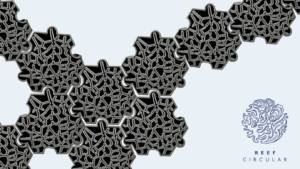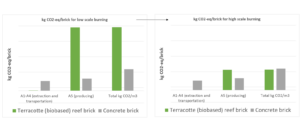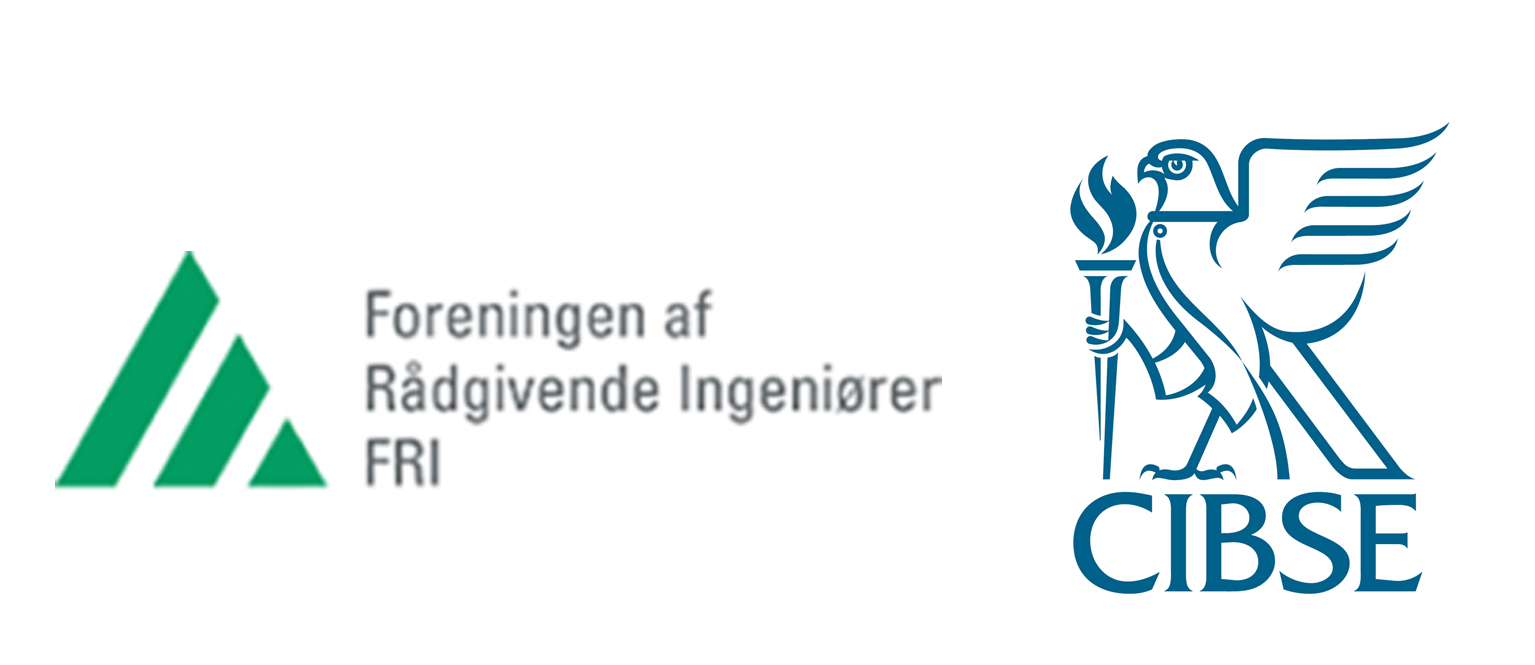ReefCircular is an innovative company with a focus on resources, biodiversity, and sustainability. One of the latest additions to a series of projects is the development of 3D-printed biobased reef modules, designed to enhance local biodiversity in marine environments with a minimal carbon footprint.
At Henrik-Innovation, we have conducted a comparative analysis of the life cycle of the first production of reef bricks in marine-safe clay, comparing it with the same volume of concrete elements primarily used as artificial reefs.
The marine environment in Denmark has never been in worse condition. In coastal areas, the seabed often resembles a swampy wasteland without rocky materials for plants to grow on and fish to hide in. A rugged environment is essential for life to thrive, and for many years, recycled concrete has been dumped into the sea to meet these conditions.
However, as concrete is an artificially manufactured material known for its significant carbon footprint during production, ReefCircular’s co-founder Kathryn Larsen considered a reef brick made of biobased materials. “I spoke to my co-founder, Dr. Shannon Hanson, who is a trained marine biologist – she mentioned that when taking samples of the marine environment, biobased materials are used instead of concrete to protect the local marine ecosystem,” stated Kathryn Larsen in 2023. “We are starting our production with clay for early 2024. Throughout the year, we will transition to printing with our own biobased concrete formulation, which is made from shell waste, is low-heat, and doesn’t require cement.”

The reef brick is to be 3D-printed with clay, a process taking approximately 3 hours. Subsequently, the dried bricks must be fired in a ceramic oven for 9 hours before they are ready for use. The reef brick can be produced in various designs, but common to all designs is the base, forming an approximately 200-square-centimeter foundation for the pattern.
The intention is to hang the reef bricks vertically from buoys and bridges, ensuring a foundation for vegetation and creating homes for various fish species, thereby gradually improving biodiversity.
Kathryn sought a transparent and honest analysis, as well as guidance on how to proceed with the product and its production. The analysis revealed a significantly larger footprint for the clay reef brick compared to a concrete element of the same size (see figure). This result is solely due to the high electricity consumption during the firing of the clay material and a lower footprint for concrete, as only cement requires incineration, and is produced on a larger scale.

Therefore, Kathryn was advised by Henrik-Innovation to scale up the firing process, thus using only a fraction of the electricity that would otherwise be needed per brick. This significantly reduces the carbon footprint in CO2 equivalents per year and, at the same time, proves to be more advantageous for the marine environment than concrete.
In the future Henrik-Innovation will perform the LCA analysis on Reef Circular’s biobased concrete formulation. “We want to prove to the world that we have developed the most sustainable form of concrete for the biodiversity market. We know we can only do that through continuing to calculate the emissions of our materials, and our production line, together with Henrik-Innovation. By sharing our data, and what we learn, we hope we can inspire transparency in other companies as well,” says Kathryn Larsen.




